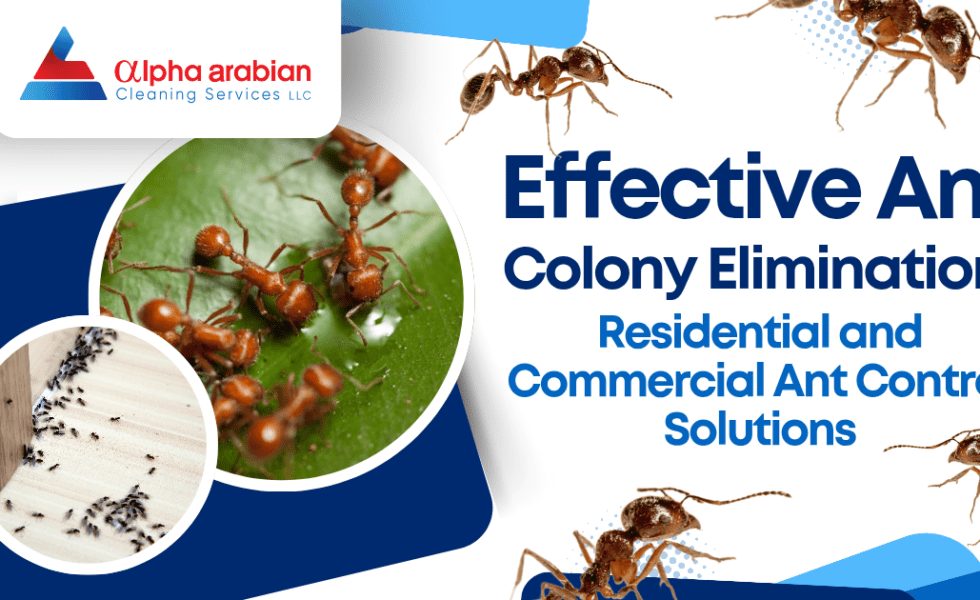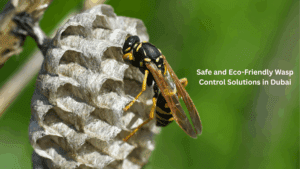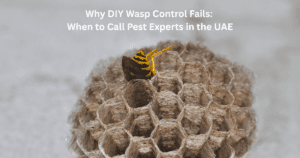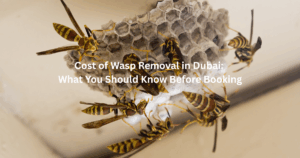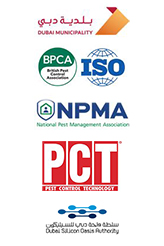Effective Ant Colony Elimination: Residential and Commercial Ant Control Solutions
Ant infestations pose a significant challenge for residential and commercial properties, leading to food contamination, structural damage, and regulatory issues. These pests form intricate colonies, making eradication difficult without targeted strategies. Unaddressed infestations can quickly escalate, disrupting daily activities and business operations.
Effective ant control requires a comprehensive approach that includes preventive measures, treatment options, and professional pest management services. This blog provides insights on identifying, preventing, and eliminating ant infestations, ensuring long-term protection against these persistent pests.
Understanding Ant Colonies: Behaviour and Lifecycle
Ants reside in well-structured colonies that comprise three primary castes, each with distinct roles. Queens are tasked with reproduction, consistently laying eggs to expand the colony. Worker ants, which are sterile females, gather food, maintain nests, and care for larvae. Drones, the male ants, exist solely to mate with the queen before dying shortly after.
The ant lifecycle includes four stages: egg, larva, pupa, and adult. The duration of these stages varies by species and environmental conditions—some species, such as the Argentine ant, form extensive super colonies, creating management challenges. Understanding the lifecycle and colony structure is essential for effective pest control strategies.
Signs of Ant Infestations
Identifying an ant infestation earlier is essential to prevent issues. A primary indicator of such an infestation is the observation of visible ant trails, where worker ants traverse between their nest and food sources. These clearly defined pathways are typically located along walls, countertops, and floors, suggesting the presence of an established colony in proximity.
Additional warning signs may include food contamination, as ants are particularly attracted to sugary or greasy substances. Nesting sites may manifest as dirt mounds in gardens or crevices within walls. The presence of discarded wings from reproductive ants and electrical damage from the Singapore ant (Monomorium destructor) indicates a growing infestation that needs immediate attention.
Residential Ant Control: Prevention and Treatment
Homeowners must take proactive measures to prevent ant infestations. Sealing entry points around doors, windows, and foundations is essential to reduce access. Proper food storage in airtight containers and regular cleaning to eliminate crumbs and spills removes attractive food sources. Additionally, addressing moisture issues, such as leaks or high humidity, helps discourage ants from nesting indoors.
To manage an infestation effectively, use surface sprays as a chemical barrier and baiting systems to target the colony. Insecticidal dust is also effective for hard-to-reach areas. Utilizing these strategies can effectively eliminate the problem and help prevent future invasions.
Commercial Ant Extermination
Businesses face significant challenges in managing ant infestations, which can jeopardize hygiene standards, affect customer perceptions, and result in non-compliance with health regulations. Usual hotspots include kitchens, storage areas, restrooms, and electrical units, where food debris and moisture promote nesting.
To effectively address these issues, commercial properties should implement perimeter spraying, use baiting stations in at-risk areas, and hire professional exterminators for larger infestations. Furthermore, food industry establishments must maintain stringent hygiene protocols to reduce the risks associated with ant activity.
Seasonal Ant Infestations: Causes and Solutions
Businesses and homeowners must act proactively to prevent ant infestations during the season. In spring and summer, ants become highly active, searching for food and water. To prevent infestations, seal structural cracks, apply outdoor insecticidal barriers, and maintain strict sanitation.
During the fall and winter, ants seek warmth indoors, leading to an increase in infestations. To combat this, reduce indoor moisture, eliminate potential nesting sites, and use targeted indoor baiting techniques. Taking these steps will help protect your space from persistent pests year-round.
Effective Ant Colony Elimination Techniques
Eliminating an ant colony requires a combination of chemical and non-chemical control methods. Surface applications of residual insecticides disrupt ant trails, while dust formulations penetrate nesting sites. Baiting systems that use slow-acting toxicants allow worker ants to transport poison back to the colony for widespread extermination.
Eco-friendly options like boiling water, vinegar and water sprays, and diatomaceous earth are effective non-chemical alternatives. These methods disrupt pheromone trails, reduce colony numbers, and help prevent future infestations without harsh chemicals.
Major Pest Ant Species and Their Control
Different ant species require specialized treatment approaches.
- The Singapore ant damages electrical systems and poses fire risks. Professional extermination is necessary.
- Argentine ants (Linepithema humile) create large colonies, making control difficult. They invade homes for moisture and food, requiring slow-acting baits for effective elimination.
- The White-footed house ant (Technomyrmex albipes) thrives on sugar and is insecticide-resistant. Baiting with sweet gel attracts workers, leading to colony extermination.
- The Pharaoh’s ant (Monomorium pharaonis) is an invasive indoor species that splits colonies quickly, making traditional insecticides ineffective. Slow-acting bait systems are the best solution for eradication.
- Carpenter ants (Camponotus spp.) create galleries in wood, causing damage. They nest in wood but don’t eat it. Control includes removing damaged wood and using insecticides and bait stations.
Conclude When to Hire Professional Pest Control Services
While do-it-yourself methods may be suitable for minor ant infestations, professional intervention is crucial for severe cases. Licensed exterminators from Alpha Arabian Professional Ant Control Service conduct thorough inspections to locate nests, identify species, and apply targeted treatments effectively.
These professional services provide long-term solutions through advanced pesticide applications, regular monitoring, and preventative maintenance, ensuring complete eradication and reducing re-infestation.
Effective ant control combines preventive measures, appropriate treatments, and professional expertise. Understanding colony behaviour and implementing seasonal strategies can help homeowners and businesses avoid ant infestations. When you partner with Alpha Arabian Professional Ant Control Service, you’re guaranteed a long-term solution to persistent infestations.
